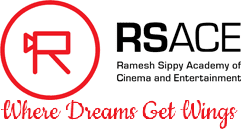
Introduction
In the bustling entertainment world, standing out from the crowd is challenging. With so many talented individuals looking for opportunities, aspiring filmmakers often find themselves facing tough competition. This is where film school comes in. In this blog, we’ll dive deeply into the reasons why attending film school could be your ticket to standing out in the competitive industry of entertainment.
Why Go to Film School?
Film school offers lots of perks for aspiring filmmakers. Firstly, it provides a comprehensive education and hands-on training in all aspects of filmmaking. From learning the basics of directing to mastering the art of screenwriting, film school equips you with the knowledge and skills needed to bring your creative visions to life. Moreover, film schools expose you to various facets of the industry, including directing, cinematography, editing, and screenwriting, giving you a well-rounded understanding of the craft.
Do You Need Film School?
Some people say you can learn everything on your own, but going to film school has its advantages. It provides structured learning, mentorship from industry professionals, and access to valuable resources. It’s an investment in your future, that could pay off in ways you never imagined. Remember, building a network is essential in any industry, and film school can be the perfect place to start.
Hands-On Learning and Practical Skills:
One great thing about film school is that you get to learn by doing. By using advanced equipment, editing softwares, and professional-grade technology, you gain practical experience that enhances your technical skills and creativity. Familiarity with industry-standard equipment not only makes you more competitive in the job market but also ensures that you can produce high-quality work that stands out in a crowded field.
Can Film School Make You Stand Out?
Absolutely! Film school gives you a competitive edge in an industry where standing out is essential. The comprehensive education and training provided by film schools give you an edge over self-taught individuals. Moreover, collaborative projects and portfolio-building opportunities during film school allow you to showcase your talents and differentiate yourself from the crowd. Additionally, the exposure to industry professionals and networking opportunities that film school provides can open doors to exciting career prospects.
Networking Opportunities
Networking is key in the entertainment industry, and film school offers ample opportunities to connect with industry professionals and fellow students. From industry events to guest speakers and alumni networks, film schools provide a platform for building valuable relationships that can shape your future career. By fostering connections with peers and mentors, you increase your chances of finding job opportunities and advancing in the industry.
Conclusion
In conclusion, the path to success in the entertainment industry often begins with a solid foundation in film education. Film school provides aspiring filmmakers with the essential knowledge, skills, and connections needed to thrive in this competitive field.
Are you passionate about filmmaking? Consider joining esteemed institutions like the Ramesh Sippy Academy of Cinema & Entertainment. Our full-time degrees and certified courses, endorsed by the University of Mumbai, set the stage for a rewarding career in the world of cinema. Take the first step towards realizing your cinematic aspirations and unlock the doors to a rewarding career in film.





